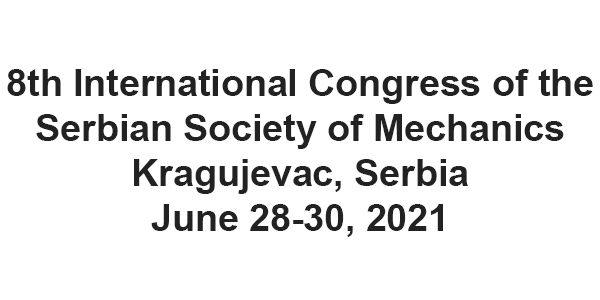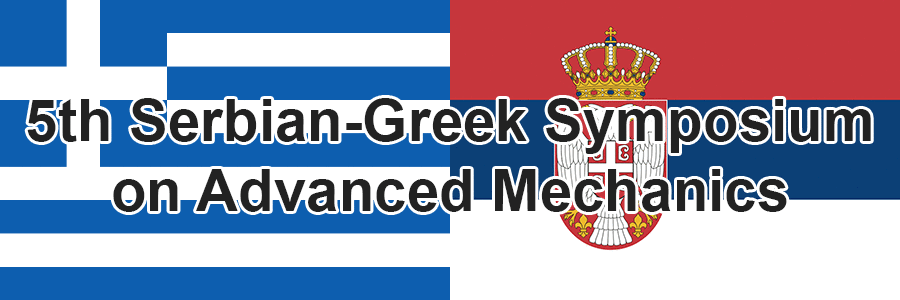8th International Congress of the Serbian Society of Mechanics, Kragujevac, Serbia, June 28-30, 2021
Invitation and Venue
It is our great pleasure to invite you to the 8th International Congress of the Serbian Society of Mechanics. The Congress will be held in Kragujevac, Serbia, on June 28-30, 2021. Kragujevac is the fourth largest city in Serbia and the administrative centre of the Šumadija District. Kragujevac was the first capital of modern Serbia and the place where the first constitution in the Balkans was proclaimed. Today, the city represents a modern industrial and commercial center of the country. With its rich cultural heritage, Kragujevac is also recognised as the driver of cultural and educational development in the region of Šumadija i Pomoravlje. It enjoys the status of an education centre housing the University of Kragujevac, one of the region’s largest higher education institutions.
The Congress will be held on the premises of the Rectorate of University in Kragujevac (Jovana Cvijića BB, 34000 Kragujevac, Serbia) and online on the BBB service of the University of Kragujevac.
Objectives
8th International Congress of the Serbian Society of Mechanics aims to bring together leading academic scientists, researchers and research scholars to exchange and share experiences and research results on various aspects of Theoretical and Applied Mechanics. It will bring an interdisciplinary platform for researchers, practitioners and educators to present and discuss the most recent innovations, theories, algorithms, as well as practical challenges encountered and solutions adopted in the fields of Classical Mechanics, Solid and Fluid Mechanics, Computational Mechanics, Biomechanics, Applied Mathematics and Physics, Structural Mechanics and Engineering.
Organizing Committee:
Co-chairs:
- Nenad Filipović, president of SSM (University of Kragujevac)
- Miloš Kojić, (Serbian Academy of Sciences and Arts)
Local Members:
- Dalibor Nikolić, secretary of SSM (University of Kragujevac)
- Miroslav Živković (University of Kragujevac)
- Gordana Jovičić (University of Kragujevac)
- Dragan Rakić (University of Kragujevac)
- Vladimir Dunić (University of Kragujevac)
- Snežana Vulović (University of Kragujevac)
International Scientific Committee:
Adhikari S. (UK), Atanacković T. (Serbia), Balean, D. (Turkey), Bauer S. (Russia), Borovac B. (Serbia), Bulatović R. (Montenegro), Carpinteri A. (Italy), Chernousko F. (Russia), Charalambakis N. (Greece), Challamel N. (France), Chen W. (Hohai, China), Chow Ch. (United States), Cvetičanin L. (Serbia), Djordjević V. (Serbia), Dolićanin Ć. (Serbia), Dragović V. (Serbia), Dunić V. (Serbia), Filipović N. (Serbia), Frischmuth K. (Germany), Gajić B. (Serbia), Glavardanov V. (Serbia), Golubović-Bugarski V. (R. Srpska, BiH), Grillo A. (Italy), Hedrih (Stevanović), K. (Serbia), Ibrahimbegović A. (France), Igić T. (Serbia), Jarić J. (Serbia), Jovanović B. (Serbia), Jovanović J. (Germany), Jovičić G. (Serbia), Katsikadelis J. (Greece), Kenjeres S. (Netherlands), Kienzler R. (Germany), Kojić M. (Serbia), Kounadis A. (Greece), Kovačić I. (Serbia), Kozak D. (Croatia), Kraseilnikov P. (Russia), Kuzmanović D. (Serbia), Lacarbonara W. (Italy), Lanusse P. (France), Lazarević M. (Serbia), Marsavina L. (Romania), Melchior P. (France), Malti R. (France), Makris N. (Greece), Maksimović S. (Serbia), Manolis G. (Greece), Manolis P. (Greece), Maretić R. (Serbia), Matthies H. (Germany), Milosavljević D. (Serbia), Mićunović M. (Serbia), Mitrović Z. (Serbia), Müller I. (Germany), Nedeljković M. (Serbia), Nigmatullin R. (Russia), Obradović A. (Serbia), Pavlović R. (Serbia), Polyzos D. (Greece), Prokopenya A. (Poland), Rakin M. (Serbia), Rakić D. (Serbia), Rega G. (Italy), Ruggeri T. (Italy), Saccomandi G. (Italy), Schrefler B. (Italy), Sedmak A. (Serbia), Seyranian A. (Russia), Simić S. (Serbia), Shitikova M. (Russia), Spanos P. (USA), Soltakhanov Sh. (Russia), Spasić D.T. (Serbia), Stevanović V. (Serbia), Sun H.G. (Hohai, China), Šumarac D. (Serbia), Tenreiro Machado J.A. (Portugal), Terze Z. (Croatia), Tikhonov A. (Russia), Tucker R. (UK), Vignjević R. (UK), Voronkova E. (Russia), Vrcelj Z. (Australia), Zarka J. (France), Zeković D. (Serbia), Živković M. (Serbia), Zorica D. (Serbia)
Plenary Speakers:
- Prof. Georgios E. Stavroulakis – Technical University of Crete, Greece
- Prof. Themis Exarchos – Ionian University, Corfu, Greece
- Prof. Mihailo R. Jovanović – University of Southern California, USA
- Prof. Ricardo Ruiz Baier – Monash University, School of Mathematics, Clayton, Australia
- Dr Božidar Jovanović – MISANU, Serbia
- Dr Marko Janev – MISANU, Serbia
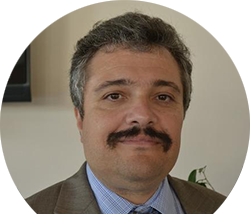
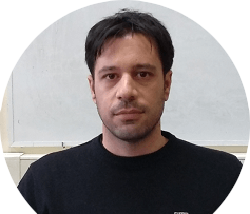
Prof. Georgios E. Stavroulakis – Technical University of Crete, Greece
Prof. Themis Exarchos – Ionian University, Corfu, Greece
Title: Auxetic and other Metamaterials in Dynamics
Title: Coronary Atherosclerosis Assessment: A New Anatomical, Functional, Morphological and Bio-mechanical Approach
Abstract:
Microstructures are in several cases reponsible for the novel mechanical behavior. Materials with negative Poisson ratio, the so-called auxetics, constitute an interesting class of mechanical metamaterials with interesting applications in statics as well as in dynamics. For example, they have enhanced damping properties. Auxetics can be produced with star-shaped microstructures and perforations. These metamaterials can serve as a first example of novel materials with nonclassical properties. Mechanical properties are mainly considered here, while in a more general setting multiphysics applications are also possible.
A short review of auxetic microstructures and optimal design of corresponding metamaterials will be presented, in view of the flexibility provided by modern additive manufacturing techniques. Applications in statics, wave propagation and dynamics will be discussed. The numerical experiments of our group will be presented together with results of current published research.
Using a classical auxetic microstructure, possible applications are studied here through numerical simulation. Finite element models are developed and dynamic analysis numerical tests are considered. First, an application related to auxetic microstructures, which are intended to be used in the core of structural panels, is presented. Then, some numerical simulation for wind turbines blades, where aluminium foam, polymeric foam and the proposed auxetic material have been considered as the core material, are taken into account. The numerical results demonstrate that the usage of auxetic microstructures results in improved dynamic response of the system in comparison to traditional, conventional materials. Further considerations of optimal design problems can be followed, either by optimizing the parameters of one given auxetic microstructure, or by using more general topology optimization tools.
Optimal design may have several goals and restrictions, depending on the application. Dynamic behaviour may be studied in frequency or time domain. In addition a complete behaviour towards the appearance of band gaps is possible. Finally, novel concepts to enhance auxeticity and control the resulting behaviour have been proposed, namely contact-activated and piezoelectric controlled microstructures. Last but not least auxetics pose challenging tasks on homogenization, especially for dynamical behaviour.
Optimal design principles, emerging research needs and technological questions will also be discussed.
Abstract:
Aims: To investigate and compare two different endothelial shear stress (ESS) calculation techniques, compare lesion specific smartFFR and ESS values, as well as total vessel smartFFR and ESS values, and investigate the relationship between smartFFR and ESS to stress MBF (myocardial blood flow) and MFR (myocardial flow reserve).
Methods: A total of 10 coronary vessels of 6 patients with intermediate pre-test likelihood for coronary artery disease who have undergone both CTCA and PET-MPI with 15O-water or 13N-ammonia were included in the study. Seven (7) cases had normal stress MBF and MFR values and three (3) had abnormal ones. PET was considered abnormal when > 1 contiguous segments showed both stress MBF ≤2.3mL/g/min and MFR ≤2.5 for 15O-water or <1.79 mL/g/min and ≤2.0 for 13N-ammonia, respectively. The ESS at the luminal surface of the artery was calculated as the product of viscosity and the gradient of blood velocity near the vessel wall. To calculate the smartFFR, we performed a transient simulation for each case. We used a pressure of 100 mmHg as a boundary condition at the inlet (i.e. mean human aortic pressure). At the outlet, a flow profile of 4 timesteps with a timestep duration of 0.25 sec was used. In each timestep, a volumetric flow rate of 1, 2, 3 and 4 ml/s are applied as outlet boundary conditions. The cut-off value for a pathological smartFFR is 0.83.
Results: There is a difference in total vessel calculated smartFFR results compared to the corresponding values of lesion specific smartFFR (0.88 vs 0.97, p=0.01). For ESS there is a negligible difference between lesion specific and total vessel values (2.22 vs 2.74, p = 0.9). There is a moderate negative correlation between both lesion specific (r = -0.543) and total vessel smartFFR and ESS (r = -0.915). ESS values were higher in vessels where vessel smartFFR was considered abnormal (1.97 vs 5.52, p = 0.01). Total vessel length smartFFR was lower in vessels with abnormal PET-MPI compared to the normal vessels (0.75 vs 0.93, p = 0.01). ESS is higher in vessels with pathological stress MBF and CFR (5.5 vs 2.0, p = 0.02)
Conclusion: The total vessel length smartFFR and lesion ESS appear to assess the functional significance of the vessel well, when compared to the PET-MPI measurements.


Prof. Mihailo R. Jovanović – University of Southern California, USA
Prof. Ricardo Ruiz Baier – Monash University, School of Mathematics, Clayton, Australia
Title: Color of turbulence: Stochastic Dynamical Modeling of Turbulent Flows
Title: Analysis of a New Mixed Formulation for Hyperelasticity Using Kirchhoff Stress
Abstract:
This talk describes how to account for second-order statistics of turbulent wall-bounded shear flows using low-complexity stochastic dynamical models based on the linearized Navier-Stokes equations. The complexity is quantified by the number of degrees of freedom in the linearized evolution model that are directly influenced by stochastic excitation sources. For the case where only a subset of correlations is known, we develop a framework to complete unavailable second-order statistics in a way that is consistent with linearization around turbulent mean velocity. In general, white-in-time stochastic forcing is not sufficient to explain turbulent flow statistics. We develop models for colored-in-time forcing using a maximum entropy formulation together with a regularization that serves as a proxy for rank minimization. We show that colored-in-time excitation of the Navier-Stokes equations can also be interpreted as a low-rank modification to the generator of the linearized dynamics. Our method provides a data-driven refinement of models that originate from first principles and it captures complex dynamics of turbulent flows in a way that is tractable for analysis, optimization, and control design.
Abstract:
Using the three-field formulation for nearly incompressible hyperelasticity introduced in [Chavan, Lamichhane, Wohlmuth, Comput. Methods Appl. Mech. Engrg. (2007), 196:4075-4086] we define a similar form valid for the fully incompressible case. We define a mixed finite element scheme and verify theoretical rates of convergence through computational tests. We also propose a new augmented Lagrangian preconditioner that improves convergence properties of iterative solvers. A few benchmark solutions are computed, and we test the formulation in models of cardiac biomechanics.
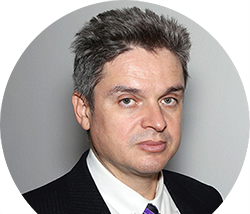
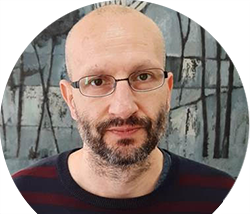
Dr Božidar Jovanović – MISANU, Serbia
Dr Marko Janev – MISANU, Serbia
Title: Classical Neumann System on Stiefel Manifolds: Integrability, Geometric and Algebraic Aspects, and Linearization
Title: Noether’s Theorem for Herglotz Type Variational Problems Involving Real and Complex Order Fractional Derivatives
Abstract:
The Neumann system on a sphere is one of the basic classical examples of completely integrable systems. In this talk we give a review on the results concerning natural integrable generalizations of the Neumann systems to Stiefel manifolds [1,2,3,4]. Two Lax pairs for the systems are presented. A -matrix Lax representation enables us to prove non-commutative integrabilty of the Neumann systems, while a -matrix Lax representation implies a generalization of the Chasles theorem relating the trajectories of the systems and common linear spaces tangent to confocal quadrics. Also, by applying the second Lax representation we describe algebraic geometric properties of the systems. We show that generic complex invariant manifolds are open subsets of Prym varieties on which the flow is linear.
Abstract:
In this work a variational principle of Herglotz type with a Lagrangian that depends on fractional derivatives of both real and complex orders is formulated, and the invariance of this principle under the action of a local group of symmetries is determined. By the Noether theorem the conservation law for the corresponding fractional Euler–Lagrange equation is obtained. A sequence of approximations of a fractional Euler–Lagrange equation by systems of integer order equations is used for the construction of a sequence of conservation laws. It is proved, that under certain assumptions, weakly converge to the one for the basic Herglotz variational principle. Namely, using the expansion of fractional derivative of a function into series, we analyze the approximations of already established Euler-Lagrange equation, infitezimal criteria and Noether’s type theorem, in a weak sense within the dual pairing of corresponding topological spaces.
Paper Publishing
Only selected full papers will be published after review process in the journals:
"dr Rastko Stojanović" award
Authors of single-authored contributed papers of the age up to 35 are eligible for “dr Rastko Stojanović” award for young scientists. Laureate of the award will be announced at Congress banquet. Winner will be awarded 100 EUR.
Organizer
- Serbian Society of Mechanics (SSM)
- Faculty of Engineering, University of Kragujevac
- Faculty of Mechanical Engineering, University of Belgrade
- Faculty of Technical Science, University of Novi Sad
- Faculty of Mechanical Engineering, University of Niš
- Hellenic Society of Theoretical and Applied Mechanics
- Institute of Information Technology Kragujevac
- University of Kragujevac
with the support of - Ministry of Education, Science and Technological Development
- Serbian Academy of Sciences and Arts
and - Serbian Society of Computational Mechanics

Languages
The official language of the Congress is English. The papers and presentations submitted should be written in English.
